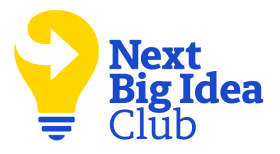Laura Huang is a behavioral scientist and Distinguished Professor of Management and Organizational Development at Northeastern University. She has held faculty positions at Harvard Business School and the Wharton School, University of Pennsylvania. Her speaking and consulting clients include Google, Microsoft, McKinsey, Lululemon, Sanofi, Pandora, and Asana.
What’s the big idea?
Each of us has a voice inside of us—one that is calm, clear, and quiet. That gut feeling that tugs you toward what you already know has always been there, ready to be heard by those who learn to listen to it. You Already Know is a guide to understanding intuition, strengthening it, and trusting it when it matters most.
Below, Laura shares five key insights from her new book, You Already Know: The Science of Mastering Your Intuition. Listen to the audio version—read by Laura herself—below, or in the Next Big Idea App.

1. Gut feel is the outcome, not the process.
We often say, “I just had a gut feeling.” But that gut feeling didn’t come out of nowhere. In my research, I found that gut feel is the final step in a much deeper process, which I call the intuiting process. It’s the result of your brain rapidly pulling from past experiences, emotional memory, contextual understanding, and data.
Think of it like this: intuition is the oven. Your gut feeling is the warm loaf of bread that comes out of it. You don’t always see the ingredients going in, but they’re there…and they matter.
Understanding this distinction is crucial. When you realize that gut feel is not magic, but something that can be trained and built, you can start to trust it with more confidence and rely upon it with more clarity.
2. Emotion isn’t intuition.
Emotion is fast. It’s loud. It demands to be felt. But that doesn’t mean it’s the same thing as intuition. One of the biggest traps we fall into is confusing a strong emotional reaction with gut feel. Just because something feels urgent doesn’t mean it’s grounded in wisdom. Intuition, by contrast, is quieter, calmer, and more nuanced. Emotion reacts. Intuition integrates.
“Just because something feels urgent doesn’t mean it’s grounded in wisdom.”
Emotions are like children in a car. You don’t want them driving the car because they’ll cause a crash. But you also don’t shove them in the trunk. You put them in the back seat. You acknowledge them. You listen to them. But you don’t let them steer. That’s the role emotion should play in decision-making.
Here’s a question I use to help myself and others tell the difference: “Would I still feel this way if I were completely calm?” If yes, you’re probably accessing your intuition. If not, you may just be listening to a child trying to floor it on the freeway.
3. Intuition is data plus experience.
We often think of intuition as the opposite of data, like it’s some mystical sixth sense or a risky shortcut that our brain makes us engage in. But my research shows that intuition is what happens when data and experience collide.
It’s not anti-data; it’s personalized data. It’s pattern recognition shaped by what you’ve lived, learned, and internalized so deeply that you don’t even realize you’re processing it. Your intuition is a kind of compressed intelligence. It’s everything you’ve seen, failed at, tested, and trusted fused together into a quiet signal.
When you get a gut feeling, it’s not just a hunch. It’s the data that’s in front of you, and it’s also data that is being filtered through you—through your memory, context, and lived insight.
4. You can train your intuition.
Intuition isn’t a fixed trait. It’s not “you have it” or “you don’t.” It’s more like a muscle, and you can develop it through repetition, reflection, and feedback.
In my research with high-performing investors and leaders, I found that the most intuitive decision-makers had one thing in common: they examined their decisions after they made them. They kept track of when their gut was right, when it wasn’t, and, most importantly, why.
“The most intuitive decision-makers had one thing in common: they examined their decisions after they made them.”
You can do this too. Start by writing down moments when you relied on your gut feeling. What patterns do you notice? What cues do you pick up on without realizing it? Over time, you’ll start to develop a more accurate, more reliable internal signal. This is how you move from unconscious intuition to mastered intuition.
5. Listen to what whispers, not what screams.
We live in a world of noise: metrics, models, feedback, algorithms. But also: opinions, egos, urgency, external expectations. Everyone’s got data. Everyone’s got advice. And in high-stakes environments, the pressure to react is intense.
Those who most successfully move well in uncertainty aren’t the ones who yell the loudest or overanalyze the most. They’re the ones who know how to listen to what whispers, not just what screams.
Intuition is quiet. It doesn’t try to win your attention. It waits for you to lower the volume of everything else. And when you do, it becomes a competitive advantage.
Enjoy our full library of Book Bites—read by the authors!—in the Next Big Idea App:































